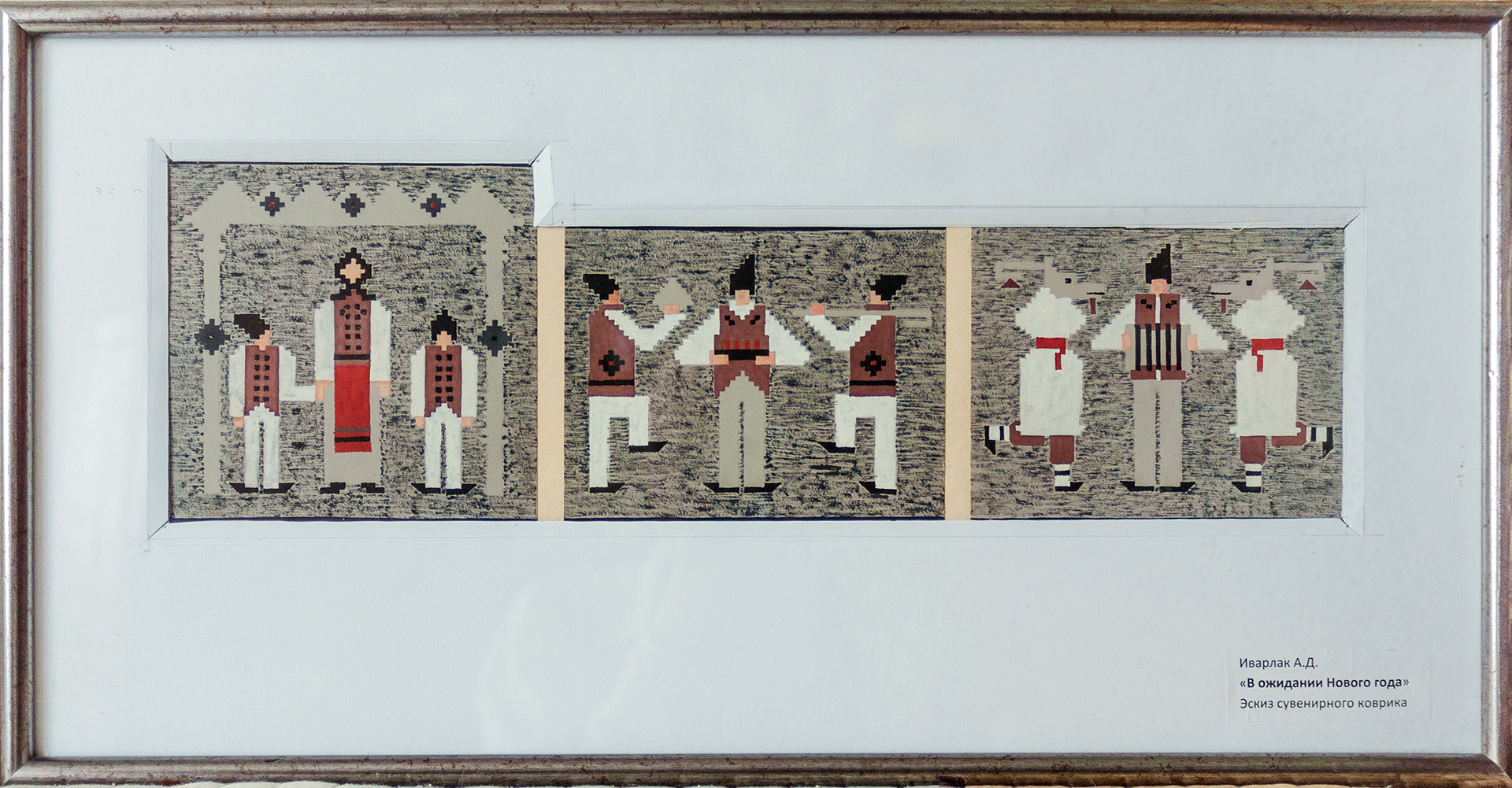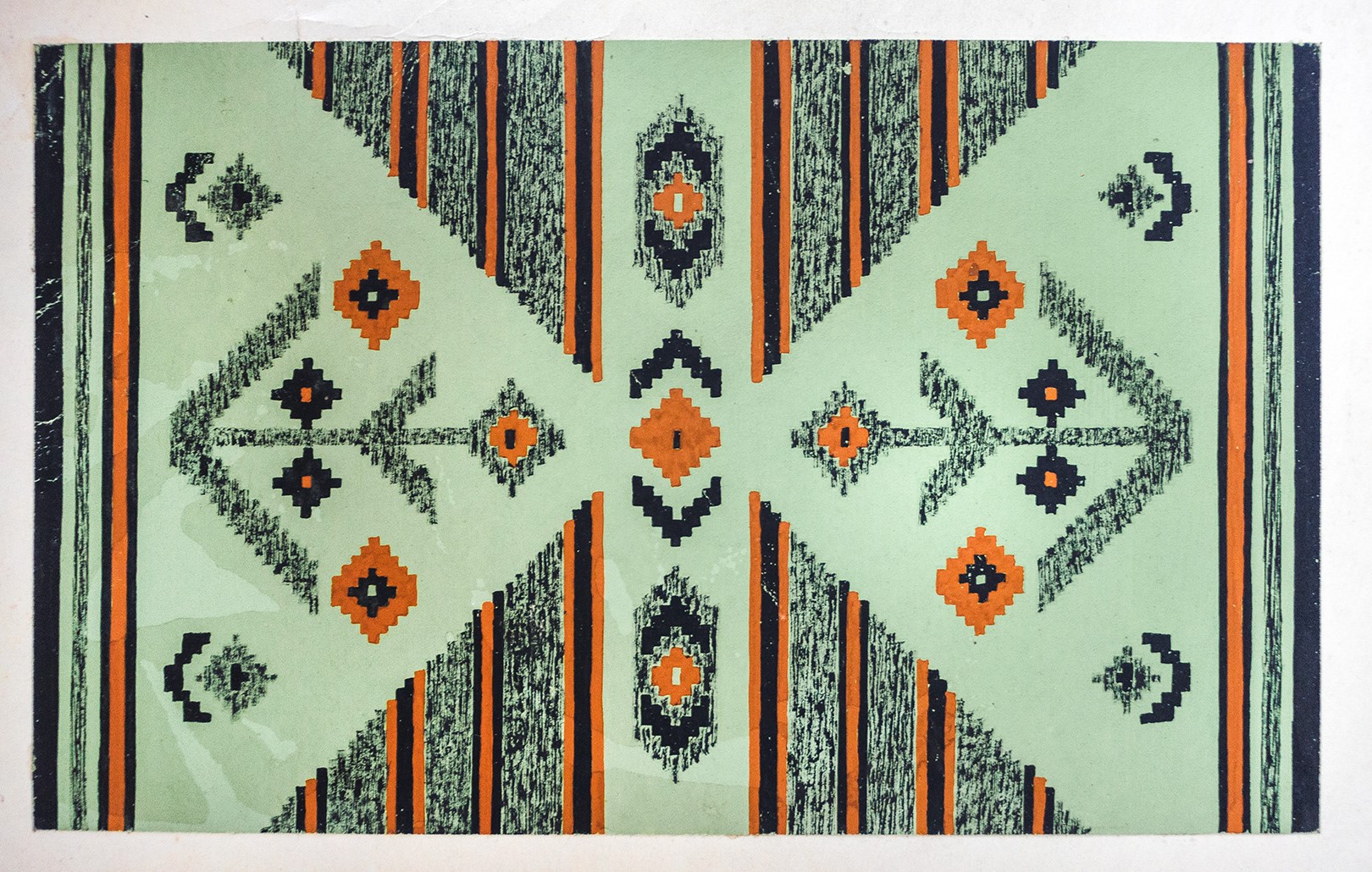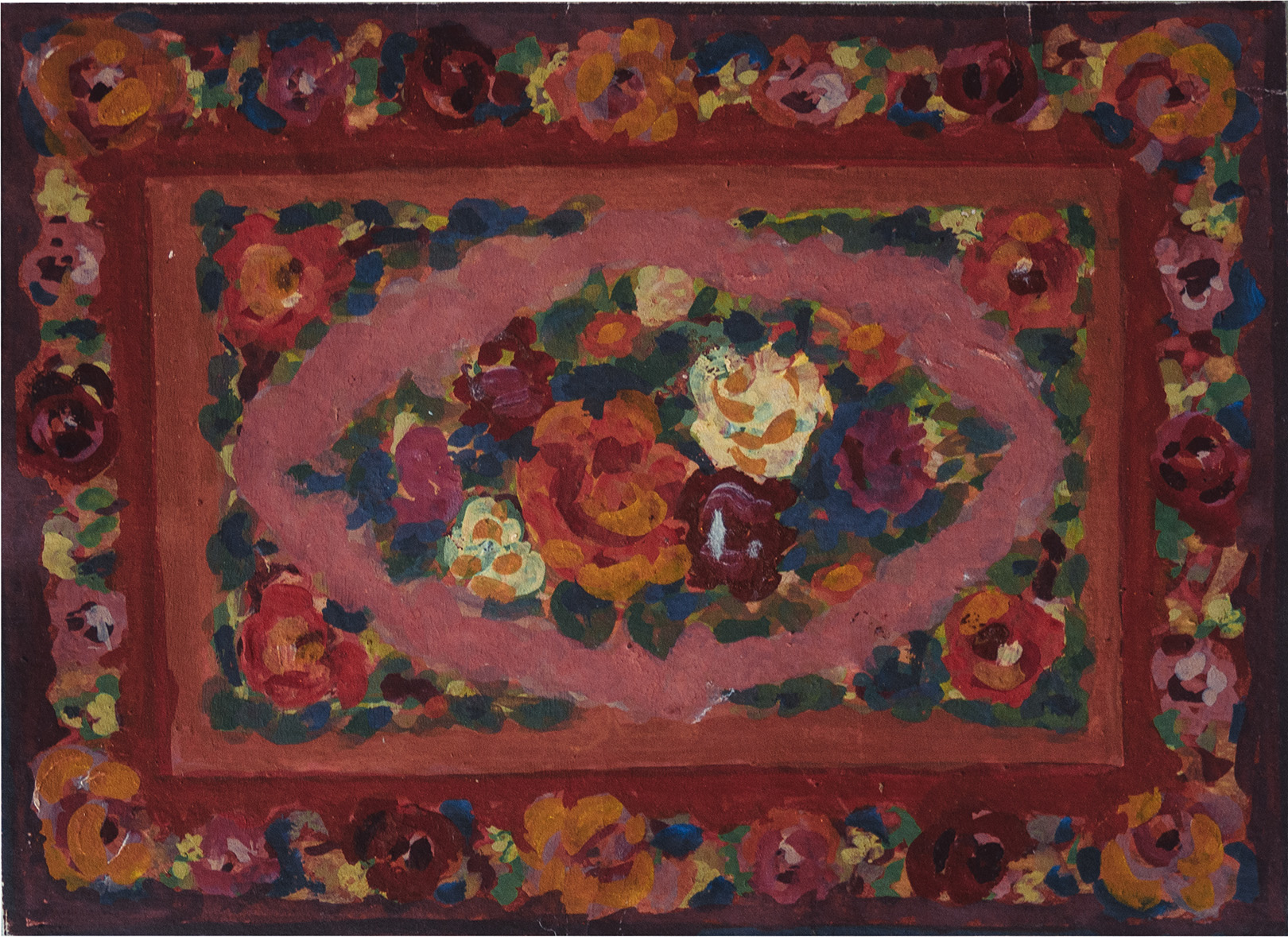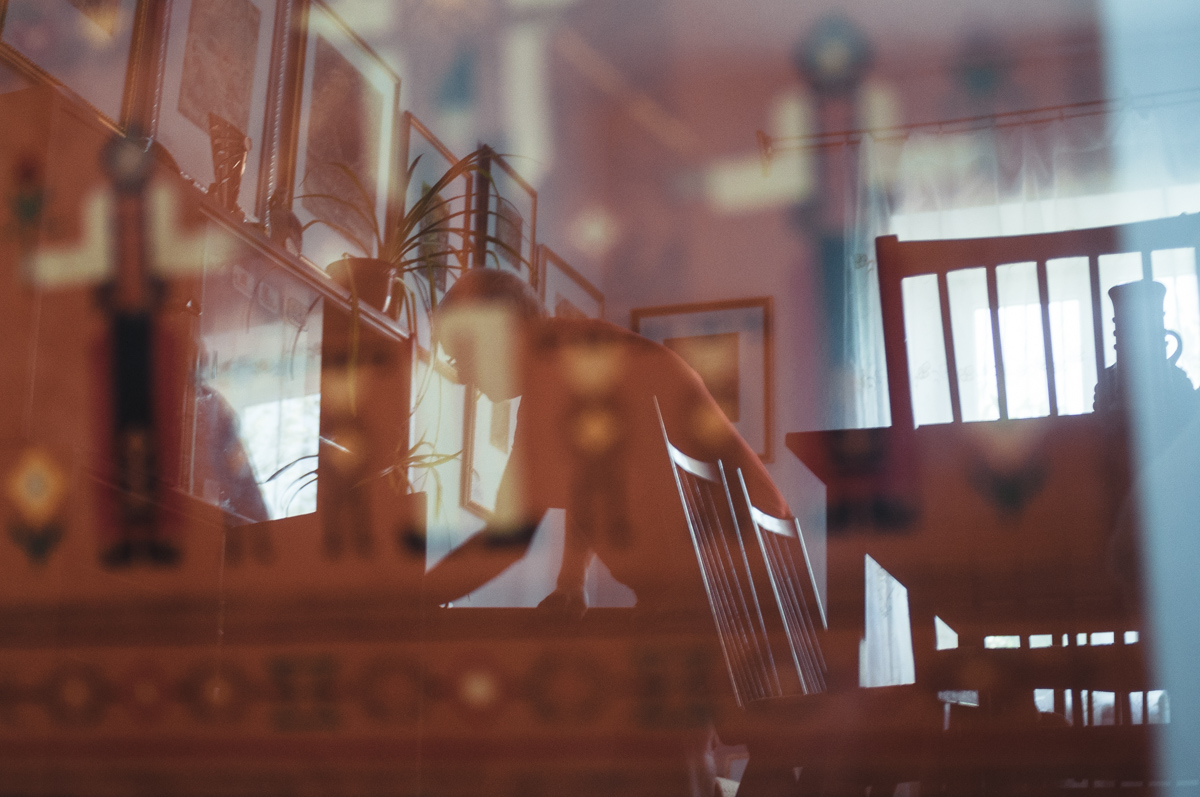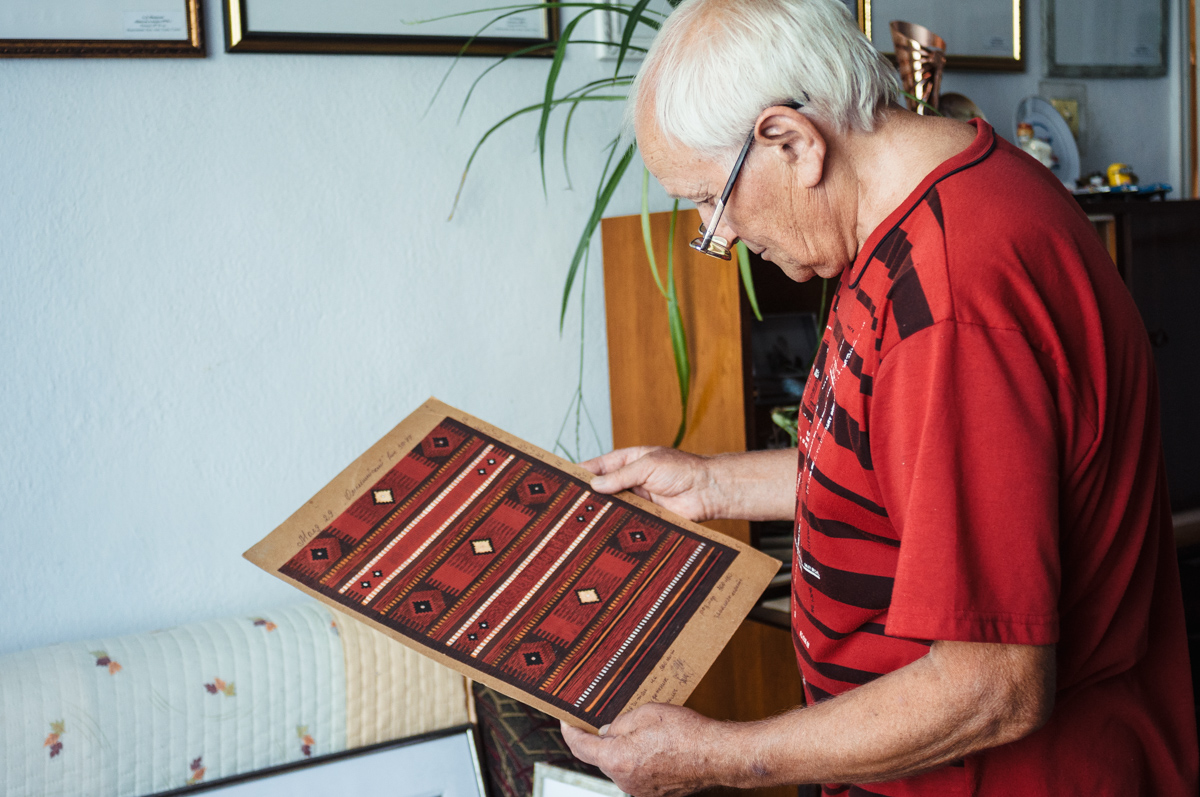In a regional art gallery, a gray-haired man wearing glasses is holding the second edition of the Catalogue of Gagauzian Carpets. As his eyes look through pages, there is a glimpse of a smile on his face, as if he has remembered something pleasant from his past. His carpets can be found in this catalogue alongside others: this man is Andrei Ivarlac – the artist who once gave a new lease of life to the Gagauzian carpet.
Andrei Ivarlac was born in Gagauzia in 1943. Born very sensitive, his path was predetermined – he was to become an artist. After studies at the Chisinau Art College named after I. Repin, he was enlisted into the army and was sent to Murmansk. In the army, he decorated the room where all political events were held. His talents were appreciated, and the head of the army club arranged for Ivarlac to transfer into his section. Soldiers serving at the club worked, rather than served. And it was there that was inspired to pursue a life in the arts.

On his return home from the army, he enthusiastically began making carpets, and pursued graphic arts and tapestry at the same time. His first personal exhibition took place in 1974, with a display of more than 50 carpets of his carpets.
If you dig into the history of the Gagauzian carpet, it becomes clear that there is no clear date when exactly it appeared. According to Andrei Ivarlac, they emerged at the beginning of the 18th century, when the Gagauz started migrating from Bulgaria to the Bugeac steppe. The carpet became self-sufficient and recognizably Gagauzian as the living conditions of the Gagauz changed, and many elements of household items and nature were transposed into the art of carpets. However, we can find an exact date for the disappearance of the Gagauzian carpet. It happened in 1946, after the war, when famine was rampant and people had to survive. That year, many people sold everything they had, including carpets. Only a few preserved their traditional Gagauzian carpets at home.
Andrei Ivarlac recovered the art of carpet making, and changed the very shape of the carpet. He uses a very hot straw color, because Gagauzia is about heat and drought. The elements and the general composition of the carpets are taken from the outside world. Therefore, Andrei Ivarlac’s carpets are a reflection of the whole Gagauzia, of its nature, its mentality, and the way of life of people residing there.
They told me: “now, you have to create more Gagauzian”, and what is Gagauzian, what is Russian? Russians have large traditions – how many districts, how many oblast are there… And these people live longer in this area than we do – 230 years. And that is why in due time we gathered together and decided to raise our own. And now, for 25-30 years already, we bear that banner, and many interesting artists and heads of different states come to us. We have been recognized already, and that means we do have the future.
All my works start at 2- 4.30 a.m. This is the time when I reflect, set my program, decide what I will do, what it could give me. If there is no fantasy, if there is no deep understanding of what you want to create, it would be empty. You would not be able to complete, to create anything. I am thinking about it. I used to work only like that, even now, I do not sleep well, and I have my head in the clouds. New compositions – I do not go to my workshop, I think about it. Then some heat appears, I come to my workshop and immediately start creating. Without inspiration there is no joy, do not go, do nothing, better take a walk around the city.
Currently, he lives on the outskirts of Comrat together with his wife in his own house. His whole house is an art gallery filled with light. In one room, there are framed art drawings on the walls, in the other there are oil paintings. Bookcases contain sketches of carpets and souvenirs (small strips of paper with ethnic ornaments). A heavy book is hidden in one of the cases. A long time ago, it contained only blank pages. He turned it into a diary. Because of his open nature, different people used to stay in Andrei’s house: artists, travelers, and writers. So he had an idea – to let this book be filled not by him, but by the people that he meets on his way. The book contains hundreds of pages written in different languages, by different people, with different biographies and geography. That book and the carpet he made, the only one that remains, are the most precious things in his house.

First of all, I am a human being. Since I was born a Gagauz, I believe that each Gagauz is obliged and should do what he can. And he should do it in such a way that his life is not wasted. One should pursue his art as he understands it, in order to express his state of mind, and that is important. Every person on Earth should leave something kind, beautiful, and good. Whether I am proud of what I am doing, I do not know. But I think I am a happy person. I have seen so much thanks to carpet making! I visited almost all republics of the former Soviet Union, and I also visited Poland and Czechoslovakia.

One artist told me “translate your works into oil, move to Poland, you will make big bucks”, but I am not interested in that. Let them remain as they are. The original source and everything that is created originally is much more precious. No matter what the replication is, it is a replication – the significance is lost.

I think that every person who loves him- or herself, who considers him- or herself to belong to a certain nation or ethnic group, first of all respects him- or herself and demonstrates respect to his / her people. I respect my people as they are.
Today they “parted brass-rags”. I worked with artists who are Moldovans, we were friends; we were always together; we interacted, we respected each other. Each person has the right to speak his language, but some third language is needed for people to communicate with each other, otherwise, Moldovans would not know the Gagauzian language, and Gagauz would not know the Moldovan language.
I believe that Nazism and nationalism are detrimental for the humanity. You can get out of that only when people respect each other and stop blaming each other saying: “you are so and so”. How to do that? It is a complicated question. We should learn to be tolerant. Tolerance and respect are the most important things”.
You cannot divide people; you cannot divide peoples into “friend-or-foe”. The planet is one for all, and there is one Lord God. Each person perceives Him in his or her way, each person interprets Him differently, but the most important thing is that we are united and we should not divide our Earth.


